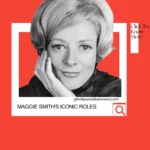Hattie McDaniel will forever be known as the first African American to win an Academy Award. However, her life extends far beyond this momentous accomplishment – featuring a vibrant career, personal struggles, and an intricate legacy. Gone with the Wind famously depicted “Mammy,” yet behind this character lies an amazing tale of resilience, talent, and love that paints a more nuanced picture of this remarkable individual.
Here is a list of Hattie McDaniel spouses, in order of marriage:
- Howard Hickman (1911 – 1915)
- George Langford (1922 – 1925)
- James Lloyd Crawford (1941 – 1945)
- Larry Williams (1949 – 1950)
Check out Pete Wentz Parents: More Than Just Namesakes or Brandon Jenner Spouses: Music Collaborator To Blended Family or scroll through other celebrities’ life in the Hollywood Industry or check on other categories.

Early Life and Love: Facing Loss
Hattie McDaniel began performing vaudeville alongside her siblings as soon as she could walk. In 1911, Hattie married Howard Hickman; unfortunately, their happiness would only last briefly before his tragic passing away in 1915 – leaving Hattie deeply grieved but continuing her artistic journey.
Seeking Solace and Facing Challenges
Hattie married George Langford in 1922; however, their union was tragically cut short three years later with George’s passing away. Despite these heartbreaks, Hattie never wavered from her drive to make it in show business.
A Career on the Rise: Finding Success and Facing Criticism
Hattie’s career flourished during the 1930s with roles in films like “The Little Colonel” and “Judge Priest.” Although Hattie initially played diverse characters, her portrayals often conformed to stereotypical portrayals of domestic maids popular at that time in Hollywood. While this depiction may have caused outrage then, it provided her with an opportunity to showcase her talent while also opening doors for future Black actors and actresses.
Love in the Time of Segregation: A Turbulent Journey
Hattie Crawford married James Lloyd Crawford, a real estate salesman. At first, she seemed content, even confiding plans of motherhood; however, these hopes were quickly dashed by an unfortunate miscarriage, leading her into depression and ultimately leading to their separation in 1945.
A Brief Glimpse of Happiness and the Pain of Betrayal
Hattie found solace in 1949 with her marriage to interior decorator Larry Williams. However, this marriage proved troubled; Larry, reportedly jealous of Hattie’s career success and attempted disruption, caused them to divorce in 1950 and left Hattie devastated emotionally. This final heartbreak left a lasting emotional mark on Hattie.
Beyond the Stereotype: A Legacy of Resilience and Pioneering Spirit
Hattie McDaniel managed to overcome personal challenges and find professional success despite their diversity. Her historic Oscar win for “Gone with the Wind” broke racial barriers in Hollywood, opening up opportunities for future generations of Black actors – though its portrayal of black characters, including herself, remains contentious, its portrayal highlights the complex realities of working within an often discriminatory system.
Conclusion: Celebrating the Woman Behind the Icon
Hattie McDaniel’s life story extends far beyond Hollywood. Her experiences as a woman navigating Hollywood during an era of segregation, her pursuit of love and personal fulfillment, as well as her dedication to her craft provide us with insight into who lies behind the iconic screen presence. While Hattie McDaniel may no longer be with us physically, her pioneering spirit and talent continue to remind us all of equality’s ongoing battle in Hollywood and beyond.
Was Hattie McDaniel the only Black person nominated for an Oscar before 1940?
No, Hattie McDaniel was not the first Black person nominated for an Oscar. In 1939, Louise Beavers received a nomination for Best Supporting Actress for her role in “Imitation of Life.” However, Hattie was the first Black person to win the award.
How did Hattie McDaniel use her platform to advocate for social change?
While Hattie primarily focused on her acting career, she did participate in some activism. She was a member of the National Association for the Advancement of Colored People (NAACP) and used her voice to speak out against racial discrimination in Hollywood. However, she was also cautious about being too outspoken, fearing it would limit her career opportunities in a segregated industry.
What were Hattie McDaniel’s other notable films besides “Gone with the Wind”?
Hattie McDaniel had a prolific career spanning over 30 years. Some of her other notable films include “The Little Colonel,” “Show Boat,” “Jezebel,” and “Saratoga Trunk.” She is also remembered for her voice acting work in Disney’s “Song of the South” (1946).
How is Hattie McDaniel remembered today?
Hattie McDaniel’s legacy is multifaceted and continues to be debated. While she is celebrated as a pioneering actress who broke racial barriers, her portrayal of stereotypical characters also raises questions about perpetuating harmful narratives. Today, her life and career offer a complex and nuanced perspective on the historical context of Black representation in Hollywood and the ongoing struggles for equality in the entertainment industry.








I truly appreciate your technique of writing a blog. I added it to my bookmark site list and will
Very well presented. Every quote was awesome and thanks for sharing the content. Keep sharing and keep motivating others.
Good post! We will be linking to this particularly great post on our site. Keep up the great writing
I’m often to blogging and i really appreciate your content. The article has actually peaks my interest. I’m going to bookmark your web site and maintain checking for brand spanking new information.